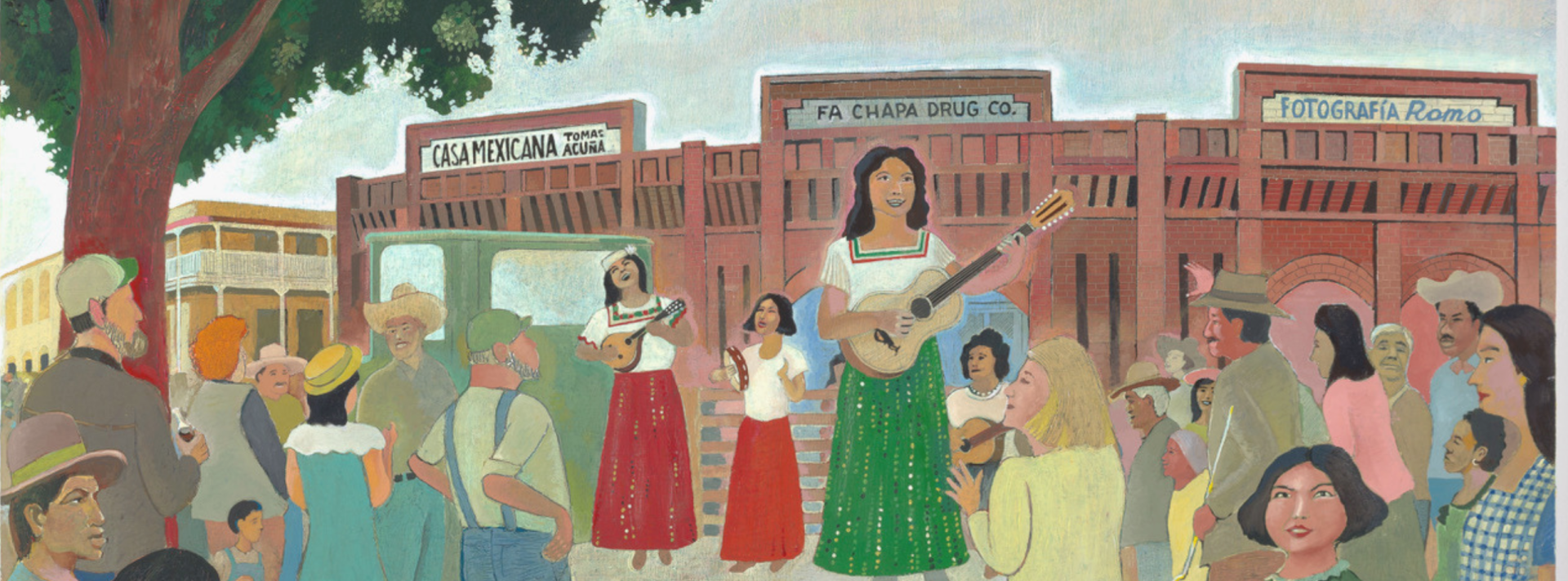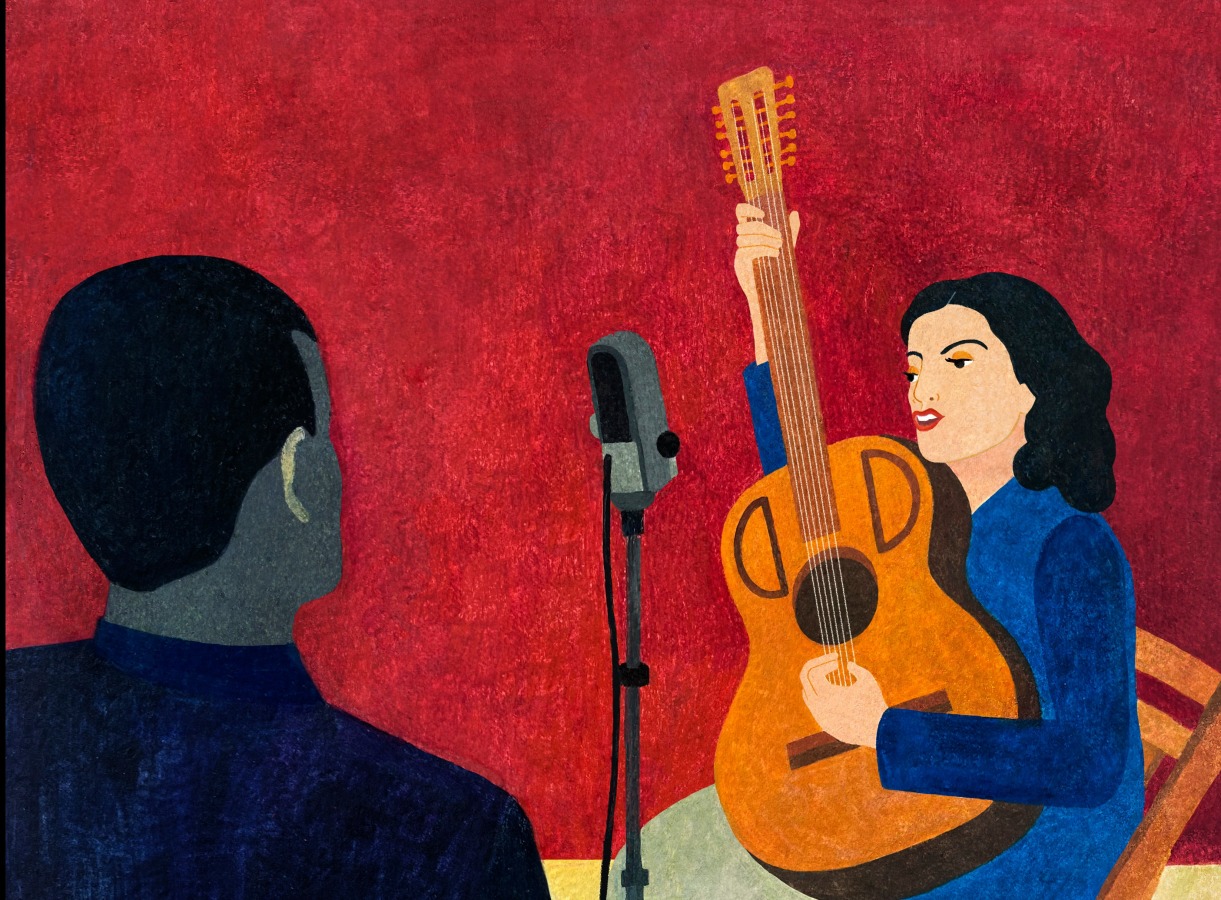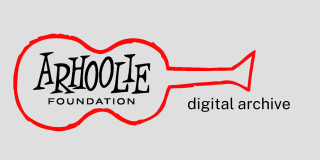
About the Project
About the Project
In the late 1970s, Arhoolie Records founder Chris Strachwitz began conducting interviews with Lydia Mendoza and her siblings for a book project.
Strachwitz had met Mendoza in 1975 while making the Tejano music documentary Chulas Fronteras. Now, with his collaborator Jim Nicolopulos, Strachwitz set about recording Lydia’s life story over a series of taped conversations. Over the next decade, Strachwitz conducted six in-depth interviews with Lydia, five interviews with her siblings, and a dozen interviews with other key individuals from her career. These interviews became the foundation of the book Lydia Mendoza: A Family Autobiography (1993), a conversational chronicle of Mendoza's life.

Interview tape from the Mendoza Family Interviews collection
Strachwitz's interview tapes are now archived by the Arhoolie Foundation as the Mendoza Family Interviews. The interviews are rich with insights into Mendoza's life and music, from her family's struggle for economic survival during the Great Depression to Lydia's experiences as a popular recording artist. More broadly, the interviews offer a window into the historical experiences of Mexican immigrants in the United States and the unique culture they forged through migration, struggle, and artistry.
In the late 1970s, Arhoolie Records founder Chris Strachwitz began conducting interviews with Lydia Mendoza and her siblings for a book project.
Strachwitz had met Mendoza in 1975 while making the Tejano music documentary Chulas Fronteras. Now, with his collaborator Jim Nicolopulos, Strachwitz set about recording Lydia’s life story over a series of taped conversations. Over the next decade, Strachwitz conducted six in-depth interviews with Lydia, five interviews with her siblings, and a dozen interviews with other key individuals from her career. These interviews became the foundation of the book Lydia Mendoza: A Family Autobiography (1993), a conversational chronicle of Mendoza's life.

Interview tape from the Mendoza Family Interviews collection
Strachwitz's interview tapes are now archived by the Arhoolie Foundation as the Mendoza Family Interviews. The interviews are rich with insights into Mendoza's life and music, from her family's struggle for economic survival during the Great Depression to Lydia's experiences as a popular recording artist. More broadly, the interviews offer a window into the historical experiences of Mexican immigrants in the United States and the unique culture they forged through migration, struggle, and artistry.

Activating Oral History
Activating Oral History
Activating Oral History
Archives preserve primary sources: the documents, objects, recordings, and other evidence that we rely on to remember the past. But traditional primary sources don't always present a full picture of historical events. That's where oral history comes in. By gathering the stories of people and communities through sound recordings, oral history adds more voices to the historical record.
Though he didn’t identify as an oral historian, Chris Strachwitz’s work on the Mendoza interviews was a prime example of what oral historians call “history from the ground up”—meaning the history of everyday people as told in their own words.
Today, archives and libraries are rich in oral history collections, and few historians would argue against the value of oral histories as primary sources. And so the question becomes: what can we do to bring greater attention to these collections, make oral histories more relevant and impactful to our communities, and inspire new oral history projects to document today's stories? In short, what can we do to “activate” oral history?
Historias de la Alondra is our first attempt to answer that question. When we invited eight visual artists from the U.S.-Mexico border region to reinterpret stories from the Mendoza Family Interviews, we hoped they would bring new and surprising perspectives to the collection. They have done just that. It’s a privilege to see the Mendoza stories through the eyes of these artists, and we hope their work inspires you to dig deeper into Lydia’s life and music, while also thinking about how this kind of approach might be used to bring to life the stories in your archive, at your school, or around your table.
Whether through visual art, a podcast, or a community listening event, we encourage you to embrace the potential for creative engagement with oral histories in your community.
Activating Oral History
Archives preserve primary sources: the documents, objects, recordings, and other evidence that we rely on to remember the past. But traditional primary sources don't always present a full picture of historical events. That's where oral history comes in. By gathering the stories of people and communities through sound recordings, oral history adds more voices to the historical record.
Though he didn’t identify as an oral historian, Chris Strachwitz’s work on the Mendoza interviews was a prime example of what oral historians call “history from the ground up”—meaning the history of everyday people as told in their own words.
Today, archives and libraries are rich in oral history collections, and few historians would argue against the value of oral histories as primary sources. And so the question becomes: what can we do to bring greater attention to these collections, make oral histories more relevant and impactful to our communities, and inspire new oral history projects to document today's stories? In short, what can we do to “activate” oral history?
Historias de la Alondra is our first attempt to answer that question. When we invited eight visual artists from the U.S.-Mexico border region to reinterpret stories from the Mendoza Family Interviews, we hoped they would bring new and surprising perspectives to the collection. They have done just that. It’s a privilege to see the Mendoza stories through the eyes of these artists, and we hope their work inspires you to dig deeper into Lydia’s life and music, while also thinking about how this kind of approach might be used to bring to life the stories in your archive, at your school, or around your table.
Whether through visual art, a podcast, or a community listening event, we encourage you to embrace the potential for creative engagement with oral histories in your community.

Lydia and Chris, early 2000s
Page banners: 1) La Plaza by Jacinto Guevara; 2) Un respaldo importante by Bárbara De La Garza

Lydia and Chris, early 2000s
Page banners: 1) La Plaza by Jacinto Guevara; 2) Un respaldo importante by Bárbara De La Garza
